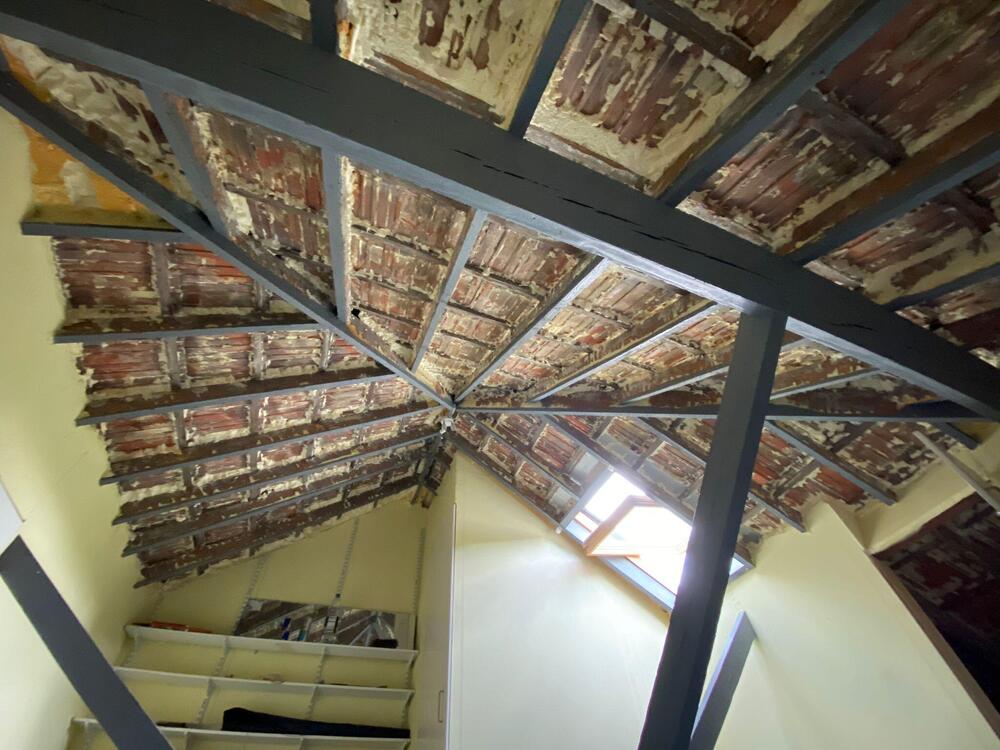
Rachel
Members-
Posts
4 -
Joined
-
Last visited
Everything posted by Rachel
-
Could you please check pic and advise if the rigid foam insulation applied in year 2016 to roof is flammable? or could it be fire-rated? Its orange in colour now and buyer's surveyor has considered it a fire risk despite it being a residential house
-
Our buyer's lender's surveyor asked us to remove the rigid foam insulation from loft (applied by previous owners 12+ years ago) as the lender won't lend due to fire risk. The foam is directly on top of the roof tiles (with no membrane/material underneath). Been a nightmare as it took weeks for contractors to remove the residue from the loft (from cutting and scraping it off). Upon re-inspection the surveyor is still not satisfied with the removal as there is residue of the foam left (stuck to roof tiles). Can this residue still be considered fire-risk? Is the surveyor being unreasonable? Any advise please on how best to remove it if possible? Looked into dry ice blasting but there is a risk of it dislodging and damaging the roof tiles (especially as some tiles with hairline cracks already)
-
Hi Tom, Thank you for your very helpful response. Yes from looking at the lease from my non-expert eye, it looks like I am fully responsible for any works/repairs etc to my flat. Landlord can just enforce anything (i.e. maintenance etc, but I and upstairs owner would bear the cost). But the issue isn't that I don't want to do the works to make it fire safety compliant. The problem is the space issue - none of the company I spoke to and inspected the flat can do the works without making the corridor inside my flat smaller which means I can't get a 60cm wide appliance or sofa etc in and out. I ordered the Hafele sliding pocket door system and tried that last week but after starting the works the builder turned around and said that the self-closing part of the kit needs weight (to allow it to close) and they would then need to box around the weight and this would be sticking out into my corridor inside which means again space is restricted. I am going around in circles basically with no success.
-
I own a leasehold 1-bed ground floor flat in a Victorian house (converted house into 2 flats) in London. The freeholder is a Plc company and they have written to me asking that I change the entrance door to my flat to make it fire-proof, including the door, hinges, intumescent strips etc. Issue I have is that I have a very small entrance to my flat and I bought this property just a year ago and they always had sliding door in place due to the small entrance available (since entrance door to upstairs has taken up all the space). So I have had builders and companies come and inspect it since and they pretty much all said that traditional normal door can't be installed as it can't be opened fully inside or outside. I had ordered fire proof kits for sliding doors (from Hafele) but again when they tried to install it they needed weights to be added to door (to have self closing mechanism) which again means space would be restricted so I couldn't move furniture/appliance in and out of the apartment. The freeholder basically said they will enforce me to change the door to make it fire proof or else I am breaking the lease. I have told them I am happy to do the works but no company is able to do the works without completely restricting the entrance space. Does anyone know if this is legal? Can the freeholder really force me to do this? I have called the London fire brigade to get advice, but they couldn't really help (they couldn't tell me if this requirement is mandatory or not). Any advice or help would be much appreciated as I don't want to pay thousands to do this work (as it would be custom made) only to end up with tiny space to squeeze in and out of and no way to get furniture in and out of my apartment). Thanks!

(1)-min-min-min(1).thumb.jpg.04a9a30eeed1cd9199090a6ec472aaf9.jpg)
